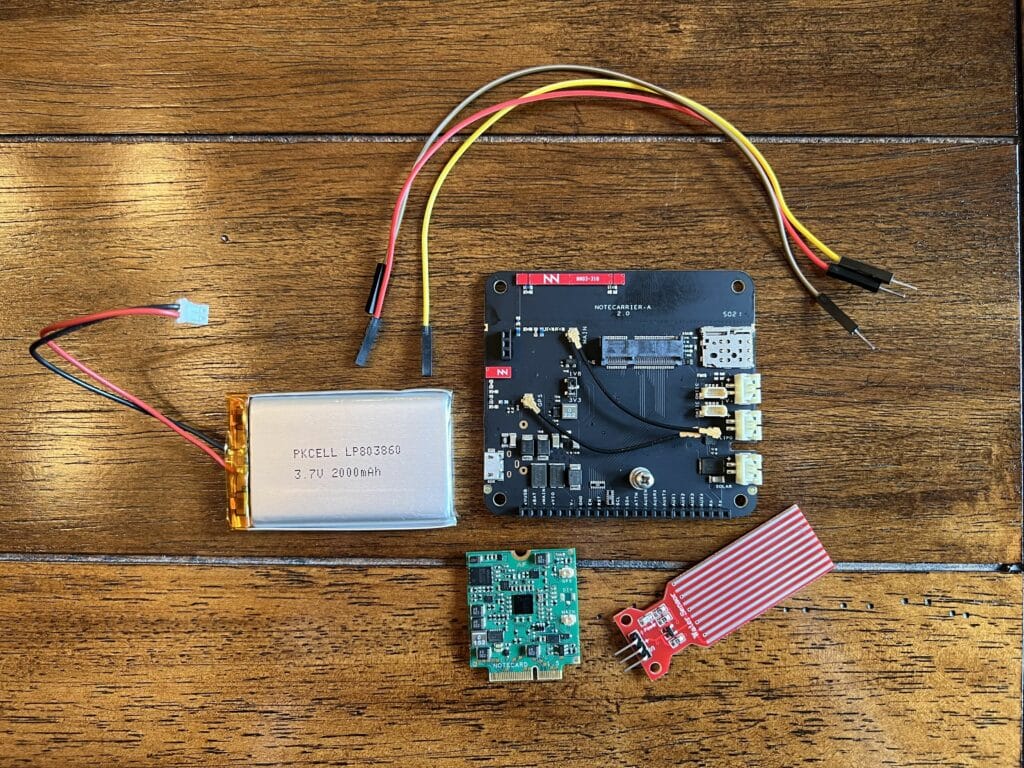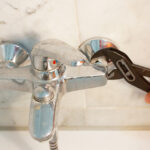Water damage and gas leaks don’t just cause mess and chaos. They destroy property, risk lives, and come with a huge price tag. For years, people relied on outdated tech or manual inspections to try to prevent the worst from happening. Now, there’s a better way – and it’s all thanks to the Internet of Things. In this guide, we’ll unpack the role of IoT in preventing water and gas leaks and why it’s no longer something you can afford to ignore.
What Is IoT?
 IoT stands for the Internet of Things. A network of smart devices connected to each other and the internet. These devices collect and share data in real-time to help us monitor, manage, and improve everyday systems. Think of smart thermostats, wearable health trackers, or connected lights that switch off when you leave the room. Now imagine applying that same idea to detect leaks.
IoT stands for the Internet of Things. A network of smart devices connected to each other and the internet. These devices collect and share data in real-time to help us monitor, manage, and improve everyday systems. Think of smart thermostats, wearable health trackers, or connected lights that switch off when you leave the room. Now imagine applying that same idea to detect leaks.
Why Leaks Are a Bigger Problem Than Most Realise
Water might seem harmless, but a small, hidden leak can cost thousands in repairs. Mould, rot, ruined furniture – the list goes on. Gas leaks, on the other hand, are even more dangerous. Leaking gas can lead to explosions or silent but deadly carbon monoxide poisoning. Often, these issues develop without any warning. That’s where real-time alerts from IoT devices make all the difference.
The Traditional Approach to Leak Detection
Traditionally, leak detection involved reactive maintenance. You’d find a puddle or smell gas, call a professional, and then fix the issue. Some systems used basic sensors, but they were limited, often triggering false alarms or missing slow leaks altogether. This patchwork approach worked – until it didn’t.
Enter IoT – A Smarter Solution
IoT-based systems don’t just wait for a disaster to happen. They actively monitor your environment 24/7. These sensors detect the smallest changes in water flow, air quality, pressure, and temperature. Once something’s off, the system can alert you instantly – or even shut off valves automatically to stop the problem in its tracks.
How IoT Helps Prevent Water Leaks
 IoT sensors can detect moisture in places you’d never think to look – under floorboards, behind appliances, or near pipes in walls. They can track pressure drops or unusual water usage, letting you know there’s a leak before you even notice it.
IoT sensors can detect moisture in places you’d never think to look – under floorboards, behind appliances, or near pipes in walls. They can track pressure drops or unusual water usage, letting you know there’s a leak before you even notice it.
Use Cases in Residential and Commercial Settings
In homes, IoT can stop a burst pipe from flooding your kitchen while you’re away. In office blocks or hotels, it can monitor entire floors from a single dashboard. These systems are scalable and easy to fit, making them perfect for both homeowners and building managers.
How IoT Helps Prevent Gas Leaks
For gas, it’s all about detecting the invisible. IoT sensors monitor the air for dangerous levels of gases like methane or carbon monoxide. If a problem is detected, they can shut off supply lines or trigger ventilation systems immediately – all without needing someone on site.
Avoiding Catastrophic Failures
Fires and explosions from gas leaks aren’t just costly. They can take lives. An IoT-based system gives you a fighting chance to stop things before they spiral out of control. And with instant alerts to your mobile, you don’t have to be there to act fast.
Benefits of Using IoT in Preventing Water and Gas Leaks
- Speed: Get alerts the moment a problem starts, not when it’s too late.
- Accuracy: Say goodbye to false alarms and missed leaks.
- Savings: Lower repair bills, avoid insurance claims, and reduce downtime.
Real-World Examples
- Retail Shop Saves Thousands: A sensor picked up a slow water leak in a storage room overnight. The system shut the valve before any stock was damaged.
- Flat Owner Stops Gas Leak While Abroad: A gas sensor detected carbon monoxide in a tenant’s flat. The system sent an alert and cut off the supply. Emergency services were contacted remotely.
The Technology Behind It
 These systems use cloud platforms, mobile apps, and wireless communication to keep you informed wherever you are. Some include artificial intelligence to learn typical patterns and spot outliers even faster. The best part? Many are plug-and-play.
These systems use cloud platforms, mobile apps, and wireless communication to keep you informed wherever you are. Some include artificial intelligence to learn typical patterns and spot outliers even faster. The best part? Many are plug-and-play.
Integration with Building Management Systems
IoT sensors can slot right into your wider building control system. From one dashboard, you can manage heating, lighting, and now leak detection too. This makes life easier for facilities teams and offers complete control over your property.
The Environmental Angle
Water waste is a huge issue. So is unnecessary gas usage. IoT helps reduce waste by detecting small problems early. This means fewer repairs, lower emissions, and less pressure on resources. It’s a win for your wallet and the planet.
Challenges and Considerations
It’s not all plain sailing. You’ll need to make sure your system is secure and that your data isn’t exposed. There’s also the cost – but it’s worth weighing that against the cost of a major leak or gas incident. For most, it pays for itself quickly.
What to Look for in an IoT Leak Detection System
- Long battery life and reliable signal
- Instant alerts via app, SMS, or email
- Cloud access to logs and reports
- Remote shut-off capabilities
- Compatibility with smart home systems
Future Trends in IoT Leak Prevention
Machine learning is being added to many systems to offer predictive maintenance. Soon, your leak detection setup might warn you about a potential issue before it even begins. Expect tighter integration with AI and energy-saving platforms in the next few years.
Final Thoughts
The role of IoT in preventing water and gas leaks is no longer just a talking point. It’s the future of property safety. Whether you’re managing a single home or a large commercial building, these systems provide peace of mind, real savings, and much-needed protection. If you’re still relying on outdated tech or manual checks, now is the time to make the switch.
FAQs
- Can I install an IoT leak detection system myself?
Yes, many are designed for simple installation. For larger systems, a professional is recommended. - Are these systems safe and secure?
Most use encrypted networks and secure apps. Just be sure to buy from a trusted supplier. - How much do IoT leak detection systems cost?
Home kits can start around £100. Full commercial systems may cost more, but usually deliver a fast return on investment. - Do I need internet access 24/7 for it to work?
Yes, internet connectivity is essential for real-time alerts and remote control features. - What happens if the system goes offline?
Most systems have local backup functions and alerts for connection loss. It’s always good to choose one with offline monitoring.





